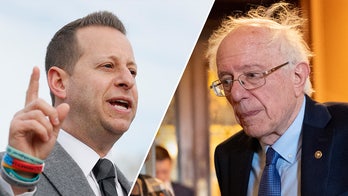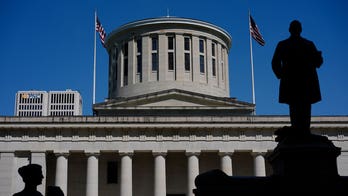The following is a transcript of the prepared remarks submitted by General Motors CEO Richard Wagoner before the Senate Banking Committee
Thank you, Mr. Chairman.
I appreciate the opportunity to return to this Committee to speak about the urgent need for federal assistance for General Motors and the domestic auto industry.
It's fair to say that last month's hearings were difficult for us but we learned a lot.
For sure, we took very seriously the concerns raised by the members of this Committee -- and that has accelerated a healthy internal review and a lot of good discussion with our partners and stakeholders.
Its no secret that GM, like our fellow domestic automakers, has struggled in the face of increased competition from foreign manufacturers with lower wage, healthcare, and benefit costs.
We made decisions that were right for the times -- collective bargaining agreements, investments in full-size trucks and SUVs that consumers wanted, and others. But we made mistakes, as well -- such as failing to build sufficient flexibility into our operations, and not moving fast enough to invest in smaller, more fuel-efficient vehicles for the U.S. market.
We have addressed these and many other issues in the plan for long-term viability that we submitted to this Committee two days ago.
Our plan demonstrates why GM needs temporary government funding, how it will be used, how we intend to repay the taxpayers, and why such funding is necessary for the company, and beneficial to the U.S. economy.
Our plan dramatically accelerates and expands the restructuring that we've been driving in North America for the past several years. Its a blueprint for creating a new General Motors -- one that is lean, profitable, self-sustaining, and fully committed to product excellence and technology leadership, especially in alternative propulsion.
* * * * * * *
Key elements of our plan include:
Increased production of hybrid, flex-fuel, and other fuel-efficient vehicles -- and an increased commitment to new, energy-efficient technologies like those in the Chevy Volt.
Significant changes to our market and retail operations, including a reduction in brands, models, and retail outlets.
Further manufacturing and structural cost reductions.
Full labor cost competitiveness with foreign manufacturers in the U.S. by no later than 2012.
Significant capital restructuring involving our debt and post-retirement healthcare obligations.
Continued suspension of GMs common stock dividend for the life of any federal loans associated with the plan.
Changes in executive compensation. For example, I will reduce my salary to $1... Board members have elected to reduce their annual retainer to $1... and the next four most senior officers will reduce their total cash compensation by about 50 percent in 2009.
And as of this week, the cessation of all corporate aircraft operations.
* * * * * * *
These and other actions detailed in our plan affect everyone associated with GM... but we believe they're necessary to position the company for long-term success.
And we believe this success is fully achievable, if we are able to weather the ongoing global financial crisis and the lowest per-capita U.S. vehicle sales in 50 years.
Toward that end, our plan respectfully requests that the federal government make available $12 billion in short-term loans, along with a $6 billion line of credit in the event the current severe market downturn persists.
Specifically, were seeking an immediate loan of $4 billion and a second draw of up to $4 billion in January.
Our intent is to begin to repay the loans as soon as 2011 and under baseline industry assumptions, fully repay them by 2012.
And should GM share prices increase as a result of the plan, warrants issued as part of the loans would allow taxpayers to benefit.
* * * * * * *
Our plan also proposes the creation of a Federal Oversight Board to help facilitate restructuring negotiations with a range of stakeholders.
This Board would oversee the loans and restructuring plan, and protect taxpayer investments in part by assuring that loans are made contingent on GM achieving its benchmarks.
* * * * * * *
Let me close by noting that GM has been an important part of American culture for 100 years and for most of that time, we've stood as the worlds leading automaker.
Were here today because we made mistakes. And were here because forces beyond our control have pushed us to the brink. Most importantly, were here because saving General Motors and all this company represents is a job worth doing.
Thank you. I look forward to your questions.
* * *
Executive Summary
General Motors Restructuring Plan For Long-Term Viability
Overview
This Restructuring Plan is a blueprint for creating a new GM, one that is lean, profitable, self-sustaining and fully competitive. The Plan calls for:
A dramatic shift in the company's U.S. portfolio, with 22 of 24 new vehicle launches in 2009-2012 being more fuel-efficient cars and crossovers. Full compliance with the 2007 Energy Independence and Security Act, and extensive investment in a wide array of advanced propulsion technologies;
Reduction in brands, nameplates, and retail outlets, to focus available resources and growth strategies on the company's profitable operations;
Full labor cost competitiveness with foreign manufacturers in the U.S. by no later than 2012;
Further manufacturing and structural cost reductions through increased productivity and employment reductions;
Balance sheet restructuring and supplementing liquidity via temporary Federal assistance.
Temporary Federal Bridge Loans:
GM is seeking a term bridge loan facility from the Federal government of $12 billion to cover operating requirements under a baseline forecast of 12 million U.S. industry vehicle sales for 2009.
In addition, GM is seeking a revolving credit facility of $6 billion that could be drawn should severe industry conditions continue, resulting in sales of 10.5 million total vehicles in 2009.
This bridge loan is expected to be fully repaid by 2012 under the baseline industry assumptions. Also, warrants issued as part of the loans would allow taxpayers to benefit from growth in the company's share price that might result from successful completion of the plan.
GM anticipates an initial draw of $4 billion in December 2008 with the next draw of $8 billion by March 2009.
Any draws would be conditioned on achieving specific restructuring benchmarks.
Product Portfolio and Fuel Efficiency
While remaining a full-line manufacturer, GM will substantially change its product mix over the next four years, and launch predominately high mileage, energy-efficient cars and crossovers.
In addition, the Chevy Volt, which can travel up to 40 miles on electricity alone, is scheduled for production in 2010, with other versions to follow.
By 2012, more than half of GM vehicles will be flex-fuel capable, and the company will offer 15 hybrid models. GM will continue development of hydrogen fuel cell technology, which, when commercially deployed, will reduce automotive emissions to just water vapor.
GM expects to become a significant creator of green jobs in the United States, as well helping suppliers and dealers transform the U.S. economy.
Market and Retail Operations:
In the U.S., GM will focus its product development and marketing efforts on four core brands - Chevrolet, Cadillac, Buick and GMC. Pontiac will be a specialty brand with reduced product offerings within the Buick-Pontiac-GMC channel. Hummer has recently been put under strategic review, which includes the possible sale of the brand, and GM will immediately undertake a strategic review of the Saab brand, and explore alternatives for the Saturn brand.
Manufacturing and Structural Costs:
GM will accelerate its current efforts to reduce manufacturing and structural costs, building on significant progress made over the past several years. With planned assembly plant consolidations, further productivity improvements in the plan, and additional changes to be negotiated, GM's wages and benefits for both current workers and new hires will be fully competitive with Toyota by 2012.
Balance Sheet Restructuring:
GM plans to engage current lenders, bond holders and its unions to significantly reduce the debt currently carried on its balance sheet. GM's plan would preserve the status of existing trade creditors and honor all outstanding warranty obligations to both dealers and consumers, in the U.S. and globally.
Compensation and Dividends:
The plan calls for shared sacrifice, including further reduction in the number of executives and total compensation paid to senior leadership. For example, the chairman and CEO will reduce his salary to $1 per year. The common stock dividend will remain suspended during the life of the loans.
Federal Oversight Board:
Given the importance and urgency of this restructuring for GM, other domestic manufacturers and the U.S. economy as a whole, the company supports the formation of a Federal oversight board. The board would help facilitate restructuring negotiations with a range of stakeholders.
Sustainability:
Once GM has completed the restructuring actions laid out in the plan, the company will be able to operate profitably at industry volumes between 12.5 and 13 million vehicles. This is substantially below the 17 million industry levels averaged over the last nine years, so it is considered to be a reasonably conservative assumption for gauging liquidity needs.
The complete Plan is attached to this testimony. I look forward to working with your Committee on legislation that addresses the liquidity challenges facing GM and the auto industry.




